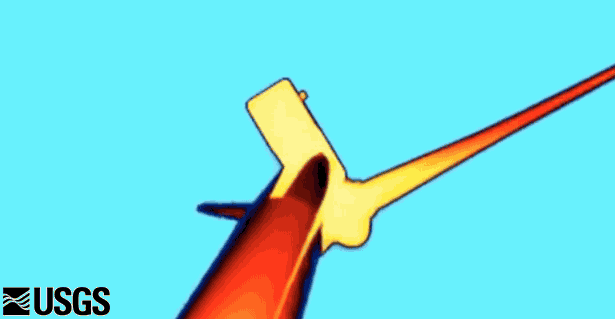Our Nation works to advance renewable energy and to avoid conflicts with and conserve wildlife.
Renewable energy is forecasted to be the fastest-growing power source for the next 20 years, according to the U.S. Energy Information Administration. Over the last decade, for example, the United States tripled electricity production from wind power.
This unprecedented growth created the need for a better understanding of how these developments interact with the landscape and its inhabitants.
“On one hand, you have the benefits of wind energy development, and those include low to zero carbon emissions and water use and other environmental benefits,” said Taber Allison, director of research and evaluation at the American Wind Wildlife Institute (AWWI), a nonprofit organization dedicated to promoting the sustainable development of wind power while conserving wildlife and wildlife habitat. “On the other hand, you have impacts to wildlife such as collision fatalities, habitat loss, and displacement.”
The Agassiz’s desert tortoise and Indiana bat are two examples of species affected by renewable energy development and protected under the U.S. Endangered Species Act. Construction and operation of wind energy developments can adversely affect these animals and their habitat. The challenges presented range from wind turbine blades hitting bats to habitat alteration and fragmentation from elements of infrastructure such as roads, fences, and transmission corridors.
“There is uncertainty in the cost of those impacts and a challenge for not only those involved in wind development but society as a whole,” said Allison. “What level of uncertainty about wind development impacts on wildlife are we willing to accept to achieve the overall benefits of wind energy in a timely manner?”
“My work revolves around the intersection of two facets: renewable energy development as a general benefit to the environment and the impact renewable energy development will have on some species,” said Brian Woodbridge, western golden eagle team coordinator with the U.S. Fish and Wildlife Service (FWS). “The sweet spot we’re after is learning how to develop renewable energy projects in smart ways that avoid or minimize wildlife effects.”
“The clock is ticking,” said Allison. “It is generally accepted by the climate change community that we have a limited time to reduce the rate of carbon emissions to have a meaningful impact on the environment.”
“A widely quoted goal is an 80 percent reduction in U.S. carbon emissions by 2050. Based on this, the Department of Energy (DOE) has a goal of 30 percent more wind energy production by 2030. That means we only have 14 years to reach the DOE goal.”
“The U.S. Geological Survey (USGS) conducts research to answer fundamental questions about certain species, such as how many bat species are there and what are their populations and distribution,” said Allison. “USGS science ultimately helps us deepen our understanding of wind energy impacts on wildlife.”
The USGS energy and wildlife research portfolio covers a wide variety of species, from bats to eagles, condors, and other raptors, coastal and marine birds, grassland and water birds, desert tortoises, pollinators, and more.
“My research looks at behavior and reproductive ecology of Agassiz’s desert tortoises in an operating wind energy facility,” said Jeffrey Lovich, a USGS research ecologist. “This information has been used in real-time by the Bureau of Land Management to avoid tortoises when fighting turbine-caused wildfires and by the FWS in their decision to authorize the repowering of a wind farm.”
“Scientific research is more robust when multiple parties, including the USGS, share resources and talent,” said Cris Hein, Wind Energy Program director with Bat Conservation International.
By applying new knowledge of wildlife interactions with energy facilities, the USGS is developing practical and cost-effective technological and management solutions aimed at reducing wildlife fatalities at wind farms and other renewable energy facilities. Many of these solutions are being used by the industry and regulatory agencies today.
“The challenge comes in the uncertainty,” said Allison. “Many people support wind energy if the impacts are mitigated appropriately. What is appropriate? The ongoing research at AWWI and the USGS contribute to the pool of information to understand risks and impacts to wildlife and habitat and what can be done to mitigate those impacts.”
For more information, contact Anne Kinsinger, USGS Associate Director for Ecosystems, at akingsinger@usgs.gov.
Read more stories about USGS science in action.







